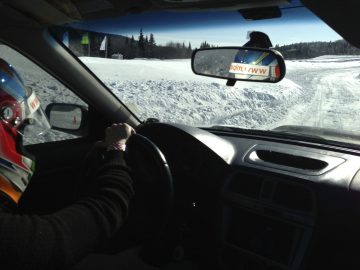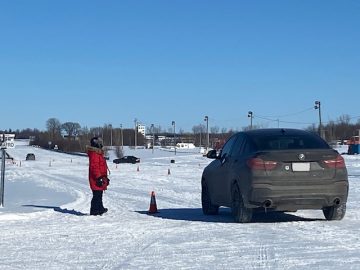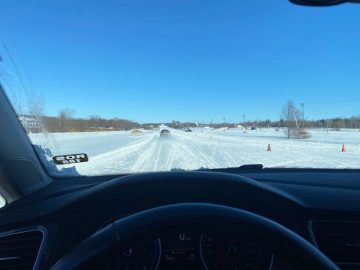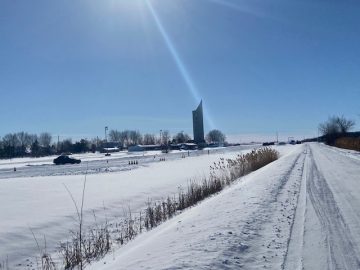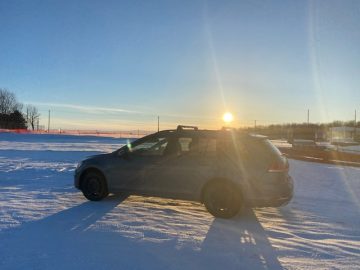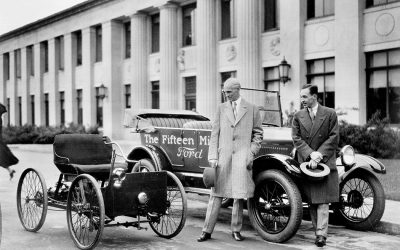February, with its share of snowstorms, reminds us of the importance of being well prepared for winter driving. There’s nothing like good tires to help you cope with the rigours of the cold season, but a better knowledge of your vehicle could avoid unpleasant surprises.
Immersed in the automotive world since the age of 12, Marie-Laurence Paquin started out in karting before graduating in Formula 1600. She began her career as an instructor in 2003 by offering on-track performance courses with Audi, Mazda and Lexus, then got involved in winter motoring programs at Mécaglisse, in conjunction with Pirelli.
Aware of the lack of offers in specialized driving, yet concerned about making roads safer, she opened her own school in 2012. On the menu, four hours of lessons to have fun in a controlled environment and improve your knowledge toward your vehicle. “Taking a winter driving course doesn’t guarantee that you will never have an accident […]. But it’s a way to give you the tools to know how to react better or what to do to avoid making a situation worse.”
BETWEEN THEORY AND PRACTICE
The class, offered to groups of six participants, includes a theoretical component. For one hour, Marie-Laurence explains basic notions such as the driving position, how tires work, weight transfer, the differences between propulsion, traction and all-wheel drive, oversteer and understeer and how to negotiate them. It is followed by three hours of practice on the track. Under the supervision of two instructors, participants apply the concepts covered behind the wheel of their cars.
Through her courses, she wants to educate and sensitize motorists on the role of tires, the only contact surface with the road. She emphasizes the importance of “knowing what we have in our hands, our vehicle, but also what’s under our wheels.” The choice of tires should be based on the use of the vehicle (urban, rural or highway driving). You must always make sure that the tire pressure is optimal and understand their level of wear and tear so that you can adjust your driving accordingly.
UNDERSTAND THE SIGNS
“You can never be too prepared for the unexpected,” notes Marie-Laurence during our telephone interview. However, she emphasizes that we shouldn’t be afraid. “The vehicle won’t start skidding unexpectedly. The car is talking to us and we should be able to understand the signs it’s sending us.”
It’s important to grasp that those principles go in the same direction as the laws of physics. “You can’t just rely on all these driving aids in our modern vehicles.” She adds that regular practice of the teachings received, helps develop good reflexes.
FUNDAMENTAL PRINCIPLES
According to Marie-Laurence, too little time is allocated to winter driving during traditional programs. To decrease the number of accidents on the road and, moreover, reduce the quantity of claims to insurance companies, she believes that a specialized course renewable every five years should be part of the SAAQ’s curriculum.
The instructor reminds us of a few fundamental principles before getting behind the wheel: clearing snow from your vehicle, eliminating blind spots created by your scarf or hood that sometimes interfere with side vision and while driving, looking far ahead to anticipate instead of reacting. But in the end, “When there’s ice, all you have to do is slow down.”


